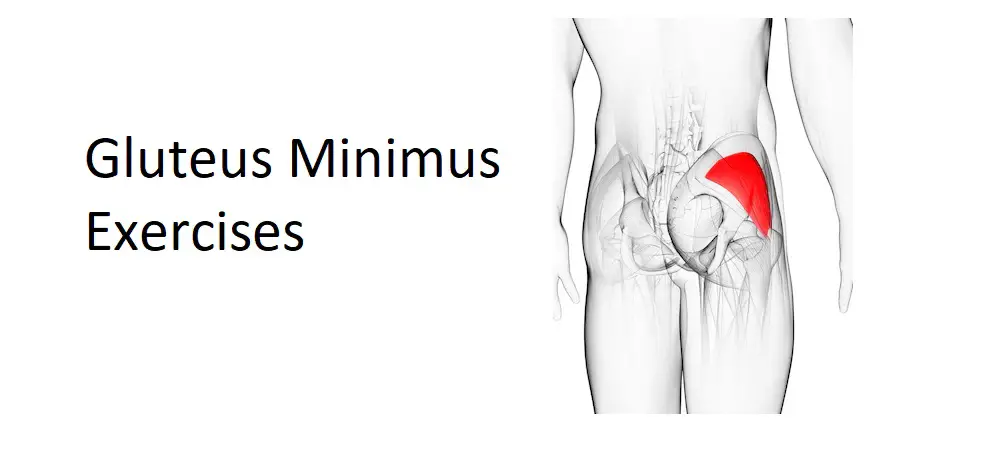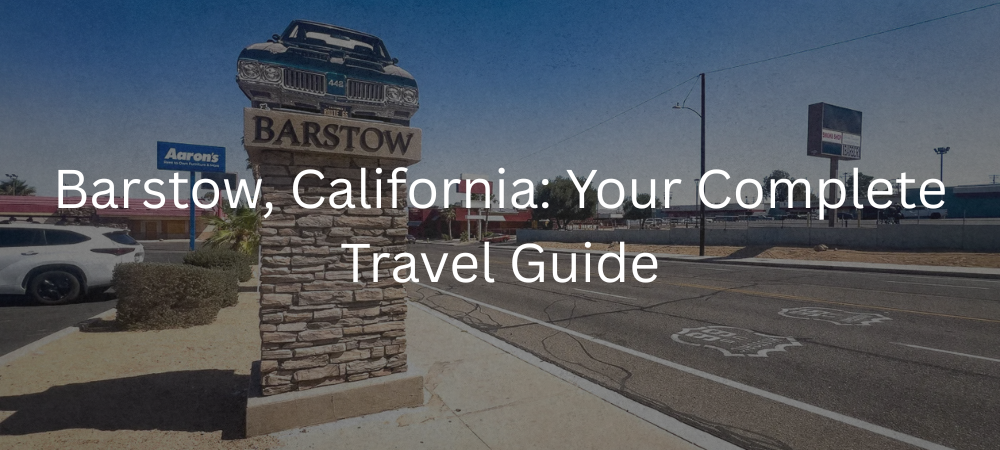Table of Contents
Anatomy of the Gluteus Minimus
The gluteus minimus is one of the three muscles that make up the gluteal muscle group, along with the gluteus maximus and the gluteus medius. It is situated deep beneath the gluteus medius and has a triangular shape. The muscle originates from the outer surface of the ilium, which is the largest bone of the pelvis, and inserts onto the greater trochanter of the femur, the large bony prominence on the outer side of the thigh bone.
Functions:
- Hip Abduction: The primary function of the gluteus minimus is to assist in the abduction of the hip joint, which involves moving the leg away from the midline of the body. This abduction action is crucial for movements such as walking, running, and side-stepping.
- Hip Internal Rotation: Additionally, the gluteus minimus also contributes to internal rotation of the hip joint, which involves rotating the thigh inward toward the midline of the body. This action is important for maintaining proper alignment and stability during various lower body movements.
- Pelvic Stability: Along with the gluteus medius, the gluteus minimus plays a significant role in stabilizing the pelvis during weight-bearing activities. It helps to prevent excessive tilting and rotation of the pelvis, thus maintaining proper alignment of the spine and lower extremities.
Clinical Significance:
- Weakness or Dysfunction: Weakness or dysfunction of the gluteus minimus can lead to various issues such as hip pain, lower back pain, and instability of the pelvis and hip joint. It can also contribute to biomechanical imbalances and compensatory movement patterns, increasing the risk of injury during physical activities.
- Rehabilitation: Strengthening exercises targeting the gluteus minimus are often prescribed as part of rehabilitation programs for individuals recovering from hip injuries, lower back pain, or lower limb conditions. These exercises help to restore muscle strength, improve hip stability, and promote proper movement mechanics.
Understanding the anatomy and function of the gluteus minimus is essential for designing effective exercise programs aimed at strengthening this muscle and optimizing overall hip function and stability. By incorporating targeted exercises into a fitness regimen, individuals can improve their performance, reduce the risk of injury, and enhance their overall quality of movement.
Importance of Strengthening the Gluteus Minimus
Strengthening the gluteus minimus is crucial for several reasons:
- Hip Stability: The gluteus minimus, along with the gluteus medius, plays a vital role in stabilizing the hip joint during weight-bearing activities. These muscles work together to prevent excessive movement and maintain proper alignment of the pelvis and lower extremities. Strengthening the gluteus minimus helps enhance hip stability, reducing the risk of injuries such as strains, sprains, and instability-related issues.
- Pelvic Alignment: Weakness or imbalance in the gluteus minimus can contribute to pelvic misalignment, leading to issues such as lower back pain, hip pain, and sacroiliac joint dysfunction. By strengthening the gluteus minimus, you can help maintain optimal pelvic alignment, which is essential for overall posture and biomechanics.
- Improved Functional Movement: The gluteus minimus is involved in various functional movements, including walking, running, climbing stairs, and transitioning between different body positions. Strengthening this muscle enhances its ability to perform these movements efficiently, leading to improved performance in daily activities and sports.
- Injury Prevention: Weakness or dysfunction in the gluteus minimus can contribute to compensatory movement patterns and overuse of other muscles, increasing the risk of injury. By strengthening the gluteus minimus, you can help distribute the workload more evenly across the hip musculature, reducing the strain on other structures and lowering the risk of overuse injuries.
- Enhanced Athletic Performance: Strong gluteus minimus muscles are essential for athletes participating in sports that require agility, stability, and explosive movements. By improving hip stability and strength, athletes can enhance their performance in activities such as sprinting, jumping, cutting, and changing direction.
- Postural Support: The gluteus minimus contributes to maintaining proper spinal alignment and posture by stabilizing the pelvis and preventing excessive tilting or rotation. Strengthening this muscle can help alleviate postural imbalances and reduce the risk of developing chronic musculoskeletal issues related to poor posture.
In summary, strengthening the gluteus minimus is essential for enhancing hip stability, improving functional movement, preventing injuries, and optimizing athletic performance. Incorporating targeted exercises into your fitness routine can help address weaknesses or imbalances in this muscle and promote overall hip health and function.
Common Weaknesses and Imbalances
Common weaknesses and imbalances in the gluteus minimus can lead to various issues affecting hip stability, movement mechanics, and overall function. Here are some of the most prevalent weaknesses and imbalances associated with the gluteus minimus:
- Hip Drop (Trendelenburg Gait): Weakness in the gluteus minimus, along with the gluteus medius, can lead to a Trendelenburg gait pattern, characterized by excessive lateral pelvic tilt on the unsupported side during walking. This imbalance can result in inefficient movement mechanics and increase the risk of hip, knee, and lower back injuries.
- Poor Hip Stability: The gluteus minimus contributes to hip stability by preventing excessive movement and maintaining proper alignment of the pelvis and femur. Weakness in this muscle can compromise hip stability, leading to increased stress on surrounding structures and a higher risk of hip joint injuries, such as labral tears or impingement syndrome.
- Lower Back Pain: Weak gluteus minimus muscles can contribute to compensatory movement patterns, such as increased lumbar lordosis (excessive arching of the lower back) or pelvic anterior tilt. These imbalances can place excessive strain on the lumbar spine and associated musculature, leading to chronic lower back pain and discomfort.
- Knee Valgus: Gluteus minimus weakness can contribute to knee valgus (inward collapse of the knees) during weight-bearing activities such as squatting, lunging, or jumping. This movement pattern places undue stress on the knee joint and surrounding ligaments, increasing the risk of anterior cruciate ligament (ACL) injuries, patellofemoral pain syndrome, and meniscal tears.
- Hip Bursitis: Dysfunction in the gluteus minimus can lead to increased friction and irritation of the trochanteric bursa, a fluid-filled sac located near the greater trochanter of the femur. This can result in trochanteric bursitis, characterized by pain and inflammation in the outer hip region, exacerbated by activities such as walking, climbing stairs, or lying on the affected side.
- Reduced Athletic Performance: Weakness or imbalance in the gluteus minimus can impair functional movements such as running, jumping, cutting, and lateral agility. Athletes may experience decreased performance, slower running speeds, reduced agility, and diminished power generation due to compromised hip stability and inefficient movement mechanics.
Addressing weaknesses and imbalances in the gluteus minimus through targeted strengthening exercises and corrective movement patterns can help improve hip stability, movement efficiency, and overall function. Incorporating exercises that specifically target the gluteus minimus, along with proper technique and progression, can help mitigate these issues and reduce the risk of associated injuries and performance limitations.
Benefits of Gluteus Minimus Exercises
Gluteus minimus exercises offer a range of benefits that contribute to overall hip health, functional movement, and athletic performance. Here are some key benefits of Gluteus Minimus Exercises:
- Improved Hip Stability: Strengthening the gluteus minimus helps enhance hip stability by supporting the pelvis and femur, reducing excessive movement and maintaining proper alignment during weight-bearing activities. This stability is crucial for injury prevention and optimal movement mechanics in various daily and athletic tasks.
- Enhanced Pelvic Alignment: Weakness or imbalance in the gluteus minimus can contribute to pelvic misalignment, leading to issues such as lower back pain, hip pain, and sacroiliac joint dysfunction. Targeted exercises help promote proper pelvic alignment, reducing the risk of associated musculoskeletal problems and improving overall posture.
- Reduced Risk of Injury: Strong gluteus minimus muscles contribute to balanced muscle activation around the hip joint, reducing the risk of overuse injuries, strains, sprains, and instability-related issues. By improving hip stability and movement efficiency, these exercises help mitigate the risk of injuries during physical activities and sports.
- Improved Functional Movement: The gluteus minimus plays a key role in various functional movements, including walking, running, climbing stairs, and transitioning between different body positions. Strengthening this muscle enhances its ability to perform these movements efficiently, leading to improved performance in daily activities and sports.
- Enhanced Athletic Performance: Athletes benefit from gluteus minimus exercises as they help improve hip stability, power generation, and movement mechanics essential for agility, speed, and explosive movements. Strong gluteus minimus muscles contribute to improved performance in activities such as sprinting, jumping, cutting, and changing direction.
- Balanced Muscle Development: Incorporating gluteus minimus exercises into a comprehensive strength training program helps promote balanced muscle development around the hip joint. This balanced development reduces the risk of muscle imbalances, compensatory movement patterns, and associated injuries.
- Prevention of Chronic Pain: Strengthening the gluteus minimus can help alleviate chronic musculoskeletal issues such as lower back pain, hip pain, and knee pain by addressing underlying weaknesses or imbalances contributing to these conditions. By improving hip stability and movement mechanics, these exercises support long-term joint health and function.
- Enhanced Core Stability: The gluteus minimus works synergistically with the core muscles to stabilize the pelvis and spine during dynamic movements. Strengthening exercises that target the gluteus minimus can help improve overall core stability, which is essential for maintaining proper posture and preventing injuries.
In summary, incorporating gluteus minimus exercises into a regular fitness routine offers numerous benefits, including improved hip stability, reduced risk of injury, enhanced functional movement, and better athletic performance. Whether you’re an athlete looking to optimize performance or someone seeking to improve everyday mobility and joint health, strengthening the gluteus minimus is essential for overall hip health and function.
Effective Gluteus Minimus Exercises
Here are some effective gluteus minimus exercises you can incorporate into your workout routine:
- Clamshells:
- Lie on your side with your hips and knees bent at a 90-degree angle.
- Keep your feet together and lift your top knee toward the ceiling while keeping your pelvis stable.
- Lower your knee back down with control.
- Repeat for the desired number of repetitions on each side.
- Side-Lying Leg Lifts:
- Lie on your side with your legs straight and stacked on top of each other.
- Lift your top leg toward the ceiling while keeping it straight.
- Lower your leg back down with control.
- Repeat for the desired number of repetitions on each side.
- Banded Lateral Walks:
- Place a resistance band around your legs, just above your knees.
- Start in a quarter-squat position with your feet hip-width apart.
- Step sideways with one foot, then follow with the other foot, maintaining tension in the band.
- Continue moving sideways for the desired number of steps, then switch directions.
- Side Plank with Leg Lift:
- Start in a side plank position with your elbow directly beneath your shoulder and your body in a straight line.
- Lift your top leg toward the ceiling while keeping your core engaged and hips stable.
- Lower your leg back down with control.
- Repeat for the desired number of repetitions on each side.
- Single-Leg Romanian Deadlift:
- Stand on one leg with a slight bend in your knee.
- Hinge at your hips and lower your torso while lifting your non-weight-bearing leg behind you, keeping your back straight.
- Keep a slight bend in your standing knee and lower until your torso is parallel to the ground or as far as you can go while maintaining balance.
- Return to the starting position by squeezing your glutes and extending your hips.
- Repeat for the desired number of repetitions on each leg.
- Single-Leg Squats:
- Stand on one leg with your other leg lifted slightly off the ground.
- Lower your body into a squat position by bending your standing knee and pushing your hips back.
- Keep your chest up and back straight.
- Push through your heel to return to the starting position.
- Repeat for the desired number of repetitions on each leg.
- Hip Abduction with Resistance Band:
- Lie on your side with a resistance band around your thighs, just above your knees.
- Lift your top leg away from your body against the resistance of the band, keeping it straight.
- Lower your leg back down with control.
- Repeat for the desired number of repetitions on each side.
When performing these Gluteus Minimus Exercises, focus on maintaining proper form and engaging the gluteus minimus muscles throughout the movement. Start with a lighter resistance or bodyweight and gradually increase as you become stronger. Incorporate these exercises into your routine 2-3 times per week for optimal results in strengthening the gluteus minimus and improving overall hip stability and function.
Proper Form and Technique for Gluteus Minimus Exercises,
Proper form and technique are crucial when performing gluteus minimus exercises to ensure effectiveness, prevent injury, and maximize results. Here are some general guidelines to follow:
- Maintain Neutral Spine: Keep your spine in a neutral position throughout the Gluteus Minimus Exercises, to minimize stress on your back and maintain proper alignment. Avoid arching or rounding your back excessively.
- Engage Core Muscles: Activate your core muscles by drawing your belly button in towards your spine. This helps stabilize your spine and pelvis during the Gluteus Minimus Exercises and protects your lower back.
- Focus on Hip Hinging: For exercises involving hip flexion and extension, such as deadlifts and hip thrusts, hinge at your hips rather than rounding your spine. Keep your chest up and shoulders back, and hinge forward from your hips while maintaining a slight bend in your knees.
- Controlled Movements: Perform each repetition with control, avoiding jerky or momentum-driven movements. Focus on a slow and controlled eccentric (lowering) phase and an explosive concentric (lifting) phase to maximize muscle engagement.
- Mind-Muscle Connection: Concentrate on engaging the gluteus minimus throughout the exercises. Visualize the muscle contracting and focus on feeling the tension in your glutes as you perform each repetition.
- Proper Foot Positioning: Maintain stable footing by pressing firmly through your feet or the foot in contact with the ground. Ensure proper alignment of your knees and ankles to avoid excessive stress on these joints.
- Use Appropriate Resistance: Choose a resistance level that allows you to perform the exercises with proper form while still challenging your muscles. Gradually increase the resistance as you become stronger.
- Quality Over Quantity: Focus on quality repetitions rather than quantity. It’s better to perform fewer repetitions of Gluteus Minimus Exerciseswith proper form than to sacrifice form for the sake of completing more repetitions.
- Breathe Properly: Remember to breathe throughout the exercises. Inhale during the eccentric phase (lowering) and exhale during the concentric phase (lifting) to maintain proper intra-abdominal pressure and support your spine.
- Listen to Your Body: Pay attention to how your body feels during and after the Gluteus Minimus Exercises. If you experience pain or discomfort beyond typical muscle fatigue, stop the exercise and reassess your form. Consult a fitness professional if you’re unsure about proper technique or experiencing persistent discomfort.
By following these guidelines and focusing on proper form and technique, you can effectively target the gluteus minimus and other muscles while minimizing the risk of injury. Consistent practice and attention to detail will help you achieve optimal results and maintain long-term joint health and function.
Progression and Variation
Progression and variation are essential aspects of any workout routine to continue challenging your muscles and making progress over time. Here’s how you can progress and vary your gluteus minimus exercises:
- Increase Resistance:
- Use resistance bands, ankle weights, or dumbbells to add resistance to your Gluteus Minimus Exercises. Gradually increase the resistance as you become stronger to continue challenging your gluteus minimus muscles.
- Increase Reps or Sets:
- Gradually increase the number of repetitions or sets you perform for each Gluteus Minimus Exercises. Aim to work towards higher volume over time while maintaining proper form and technique.
- Change Tempo:
- Experiment with different tempos during your Gluteus Minimus Exercises. Incorporate slow and controlled movements to increase time under tension and maximize muscle activation. You can also try adding explosive or plyometric movements for a different stimulus.
- Modify Range of Motion:
- Adjust the range of motion of your exercises to increase difficulty. For example, for side-lying leg lifts, you can lift your leg higher or lower to target different parts of the gluteus minimus.
- Try Advanced Variations:
- Once you’ve mastered the basic Gluteus Minimus Exercises, try more advanced variations to further challenge your gluteus minimus muscles. Examples include single-leg exercises like single-leg Romanian deadlifts or single-leg squats, which require greater balance and stability.
- Combine Exercises:
- Create compound or combination Gluteus Minimus Exercises that target multiple muscle groups, including the gluteus minimus. For example, combine a squat with a side leg lift or a lunge with a rotation to engage the glutes from different angles.
- Incorporate Stability Challenges:
- Use unstable surfaces like balance boards, stability balls, or foam pads to add a stability challenge to your exercises. This forces your muscles, including the gluteus minimus, to work harder to maintain balance and stability.
- Rotate Exercises:
- Rotate through a variety of gluteus minimus exercises to prevent plateauing and keep your workouts engaging. Mix and match different exercises to target the gluteus minimus from various angles and movement patterns.
- Periodize Your Training:
- Implement a periodization plan where you vary the intensity, volume, and exercises over time. This helps prevent overtraining, promotes recovery, and optimizes muscle adaptation and growth.
By incorporating progression and variation into your gluteus minimus exercises, you can continually challenge your muscles, prevent plateaus, and make consistent progress towards your fitness goals. Remember to listen to your body and adjust the intensity and volume as needed to avoid overtraining and minimize the risk of injury.
Incorporating Gluteus Minimus Exercises into Your Routine
Incorporating gluteus minimus exercises into your routine can greatly benefit your overall hip strength, stability, and function. Here’s how you can effectively integrate these exercises into your workout routine:
- Warm-Up:
- Begin your workout with a dynamic warm-up to increase blood flow to the muscles and prepare your body for exercise. Include movements that target the hips, such as leg swings, hip circles, and bodyweight squats, to activate the gluteus minimus and surrounding muscles.
- Primary Workout:
- Choose 2-3 gluteus minimus exercises from the list provided earlier, focusing on a variety of movements and angles to target the muscle comprehensively.
- Perform each exercise for 2-3 sets of 8-15 repetitions, depending on your fitness level and goals. Start with lighter resistance or bodyweight and gradually increase intensity as you progress.
- Allow adequate rest between sets (about 30-60 seconds) to recover and maintain quality repetitions.
- Supplementary Exercises:
- Incorporate additional lower body exercises that target the glutes, hamstrings, and quadriceps to create a well-rounded workout. Exercises like squats, lunges, deadlifts, and hip thrusts can complement your gluteus minimus exercises and provide a comprehensive lower body workout.
- Balance and Stability Training:
- Include exercises that challenge balance and stability, such as single-leg exercises or exercises on unstable surfaces. These movements engage the gluteus minimus and other hip stabilizers to improve proprioception and joint stability.
- Cool Down and Stretching:
- Finish your workout with a cooldown to lower your heart rate and stretch the muscles. Perform static stretches targeting the hip flexors, glutes, and hamstrings to improve flexibility and prevent muscle tightness.
- Frequency and Progression:
- Aim to incorporate gluteus minimus exercises into your routine 2-3 times per week to allow for adequate recovery and muscle growth.
- Monitor your progress over time and gradually increase the intensity, volume, and resistance of your exercises as you become stronger.
- Listen to Your Body:
- Pay attention to how your body responds to the exercises and adjust the intensity or volume accordingly. If you experience pain or discomfort, modify the exercises or consult a fitness professional for guidance.
- Consistency is Key:
- Consistently performing gluteus minimus exercises as part of your workout routine will yield the best results over time. Make it a habit to prioritize hip strength and stability to support your overall fitness goals.
By incorporating gluteus minimus exercises into your routine with proper form, adequate intensity, and progressive overload, you can effectively strengthen this muscle and improve your hip stability, movement mechanics, and overall lower body function.
Precautions and Modifications
When incorporating gluteus minimus exercises into your routine, it’s important to consider precautions and modifications to ensure safety and effectiveness, especially if you have any pre-existing conditions or injuries. Here are some precautions and modifications to keep in mind:
- Consult a Healthcare Professional: If you have any underlying health conditions, injuries, or concerns, consult with a healthcare professional or a certified fitness trainer before starting a new Gluteus Minimus Exercises program. They can provide personalized recommendations and guidance based on your individual needs and limitations.
- Start Slowly: If you’re new to gluteus minimus exercises or strength training in general, start with lighter resistance or bodyweight exercises to allow your muscles to adapt gradually. Focus on mastering proper form and technique before progressing to more challenging variations.
- Listen to Your Body: Pay attention to how your body feels during and after Gluteus Minimus Exercises. If you experience pain, discomfort, or unusual sensations, stop the exercise and reassess your form. Avoid pushing through pain, as it may indicate an underlying issue or risk of injury.
- Modify Exercises: Modify exercises as needed to accommodate your fitness level, mobility, and any physical limitations. For example, you can perform exercises with partial range of motion, reduce resistance, or use support aids such as stability balls or resistance bands to assist with stability.
- Avoid Overtraining: Allow adequate rest and recovery between workouts to prevent overtraining and reduce the risk of overuse injuries. Incorporate rest days into your weekly routine and listen to your body’s signals for fatigue and muscle soreness.
- Warm-Up Properly: Prioritize a dynamic warm-up before starting your gluteus minimus exercises to increase blood flow, improve joint mobility, and prepare your muscles for movement. Include movements that target the hips, such as leg swings, hip circles, and bodyweight squats.
- Gradually Increase Intensity: Progressively increase the intensity, volume, and resistance of your gluteus minimus exercises over time as your strength and fitness level improve. Aim for gradual progression to avoid sudden increases in workload that may lead to injury.
- Stay Hydrated and Fuel Your Body: Drink plenty of water before, during, and after your workouts to stay hydrated and support muscle function. Fuel your body with nutritious foods rich in protein, carbohydrates, and healthy fats to provide energy for exercise and support muscle recovery.
- Consider Posture and Alignment: Pay attention to your posture and alignment during exercises to maintain proper spinal alignment and reduce the risk of strain or injury. Engage your core muscles and avoid excessive arching or rounding of the back.
By following these precautions and modifications, you can safely and effectively incorporate gluteus minimus exercises into your routine to improve hip strength, stability, and overall lower body function while minimizing the risk of injury or discomfort.
Sample Gluteus Minimus Workout
Here’s a sample gluteus minimus workout that you can incorporate into your routine. This workout targets the gluteus minimus along with other hip and lower body muscles for a comprehensive strength training session:
Warm-Up:
- Perform 5-10 minutes of light cardio such as jogging, cycling, or brisk walking to increase blood flow and warm up your muscles.
- Follow with dynamic stretches and mobility exercises focusing on the hips, including leg swings, hip circles, and bodyweight squats.
Gluteus Minimus Workout:
- Clamshells:
- 3 sets of 12-15 repetitions per side
- Lie on your side with hips and knees bent, feet together.
- Lift your top knee toward the ceiling while keeping your pelvis stable.
- Lower with control and repeat.
- Side-Lying Leg Lifts:
- 3 sets of 10-12 repetitions per side
- Lie on your side with legs straight and stacked.
- Lift your top leg toward the ceiling, keeping it straight.
- Lower with control and repeat.
- Banded Lateral Walks:
- 2 sets of 10-12 steps each way
- Place a resistance band around your thighs.
- Step sideways with one foot, then follow with the other foot, maintaining tension in the band.
- Continue moving sideways for the desired number of steps, then switch directions.
- Single-Leg Romanian Deadlift:
- 3 sets of 10-12 repetitions per leg
- Stand on one leg with a slight bend in the knee.
- Hinge at your hips and lower your torso while lifting your non-weight-bearing leg behind you.
- Return to the starting position by squeezing your glutes and extending your hips.
- Hip Abduction with Resistance Band:
- 2 sets of 12-15 repetitions per leg
- Lie on your side with a resistance band around your thighs.
- Lift your top leg away from your body against the resistance of the band, keeping it straight.
- Lower with control and repeat.
Cooldown and Stretching:
- Finish the workout with 5-10 minutes of light cardio to gradually lower your heart rate.
- Perform static stretches targeting the glutes, hips, and hamstrings, holding each stretch for 20-30 seconds.
Note: Adjust the number of sets, repetitions, and resistance based on your fitness level and goals. Start with lighter resistance or bodyweight exercises if you’re new to gluteus minimus training and gradually increase intensity as you progress. Listen to your body and modify exercises as needed to ensure proper form and avoid overexertion or injury.
Stretching and Recovery
Stretching and recovery are essential components of any workout routine, including one focused on the gluteus minimus. Here’s how you can incorporate stretching and recovery techniques into your regimen:
Post-Workout Stretching:
- Glute Stretch:
- Sit on the ground with one leg bent and the other leg extended straight.
- Cross your bent leg over the extended leg, placing the foot flat on the floor.
- Twist your torso towards the bent knee and place your opposite elbow on the outside of the bent knee.
- Gently press the knee towards the opposite shoulder to deepen the stretch in the glute.
- Hold for 20-30 seconds, then switch sides.
- Piriformis Stretch:
- Lie on your back with both knees bent and feet flat on the floor.
- Cross one ankle over the opposite knee, forming a figure four shape with your legs.
- Reach through the opening created by your legs and clasp your hands behind the thigh of the bottom leg.
- Gently pull your bottom leg towards your chest until you feel a stretch in the glutes and outer hip of the crossed leg.
- Hold for 20-30 seconds, then switch sides.
- Hamstring Stretch:
- Sit on the floor with one leg extended straight and the other leg bent, foot against the inner thigh of the extended leg.
- Lean forward from your hips, reaching towards your toes with both hands.
- Keep your back straight and avoid rounding your spine.
- Hold the stretch for 20-30 seconds, then switch legs.
Recovery Techniques:
- Foam Rolling:
- Use a foam roller to target the glutes, hamstrings, and other lower body muscles.
- Roll slowly over tight or sore areas, applying gentle pressure.
- Spend extra time on any areas of particular tightness or discomfort.
- Massage Therapy:
- Consider scheduling regular massages to help release tension and improve circulation in the gluteal muscles.
- A professional massage therapist can target specific areas of tightness and provide targeted relief.
- Active Recovery:
- Engage in low-intensity activities such as walking, swimming, or cycling on rest days to promote blood flow and aid in muscle recovery.
- Active recovery helps flush out metabolic waste products and reduce muscle soreness.
- Hydration and Nutrition:
- Stay hydrated by drinking plenty of water throughout the day to support muscle function and recovery.
- Consume a balanced diet rich in protein, carbohydrates, and healthy fats to provide the nutrients your muscles need to repair and rebuild.
- Rest and Sleep:
- Ensure you’re getting adequate sleep each night to allow your muscles to recover and grow.
- Aim for 7-9 hours of quality sleep per night to support optimal recovery and overall health.
Incorporating stretching and recovery techniques into your routine can help prevent muscle tightness, reduce the risk of injury, and promote overall muscle health and flexibility. Make sure to listen to your body and adjust your stretching and recovery practices based on your individual needs and preferences.
Real-Life Applications
Understanding how gluteus minimus exercises translate into real-life applications can help motivate and guide your workout routine. Here are some practical scenarios where a strong and functional gluteus minimus is beneficial:
- Walking and Running: The gluteus minimus plays a crucial role in stabilizing the hip joint and controlling the movement of the leg during walking and running. Strong gluteus minimus muscles help maintain proper alignment of the pelvis and femur, reducing the risk of hip, knee, and lower back injuries during these activities.
- Stair Climbing: When climbing stairs, the gluteus minimus helps stabilize the pelvis and control the movement of the hips and knees. Strong gluteus minimus muscles contribute to efficient and balanced movement patterns, allowing you to ascend and descend stairs with ease and stability.
- Balance and Stability: Activities that require balance and stability, such as standing on one leg, pivoting, or changing directions quickly, rely on the strength and coordination of the gluteus minimus. By strengthening this muscle, you can improve your balance and stability in various real-life situations, such as navigating uneven terrain or participating in sports.
- Functional Movement Patterns: Many daily activities involve multi-directional movements and coordination of multiple muscle groups, including the gluteus minimus. Whether you’re bending down to pick up objects, reaching for items on high shelves, or getting in and out of a car, a strong and functional gluteus minimus contributes to efficient movement mechanics and reduced risk of injury.
- Sports Performance: In sports and athletic activities, the gluteus minimus plays a vital role in generating power, explosiveness, and agility. Whether you’re sprinting, jumping, cutting, or performing lateral movements, strong gluteus minimus muscles contribute to enhanced performance and reduced risk of sports-related injuries.
- Postural Support: Proper posture relies on the alignment and coordination of various muscle groups, including the gluteus minimus. Strong gluteus minimus muscles help support the pelvis and spine, reducing the risk of postural imbalances and associated musculoskeletal issues such as lower back pain and poor posture.
- Injury Prevention: Ultimately, the strength and functionality of the gluteus minimus contribute to overall joint health and resilience, reducing the risk of overuse injuries, strains, and sprains in the hips, knees, and lower back. By incorporating gluteus minimus exercises into your routine, you can proactively prevent injuries and maintain optimal physical function throughout your daily life.
By understanding the real-life applications of gluteus minimus exercises, you can appreciate the importance of strengthening this muscle and feel motivated to incorporate targeted exercises into your workout routine. Whether you’re focused on improving mobility, enhancing athletic performance, or preventing injuries, strong gluteus minimus muscles contribute to overall health and well-being in numerous ways.








